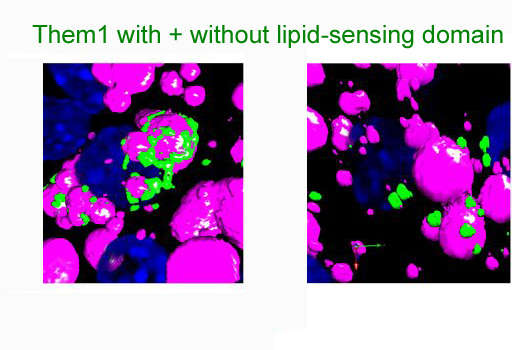Newborn humans and hibernating mammals have high levels of brown adipose tissue, which they use to generate heat. Adult humans generally don’t have abundant brown adipose tissue, even if they have lots of “white” fat. Increasing brown fat’s activity may be an approach to treat obesity and related metabolic disorders.
Recently researchers identified an enzyme called Them1 (thioesterase superfamily member 1) as a factor that limits heat generation in brown adipose tissue. Emory biochemist Eric Ortlund and his lab showed how part of the Them1 enzyme binds a certain type of lipid molecule, and also how that part of the enzyme anchors the enzyme close to lipid droplets in adipose cells. Former graduate student Matt Tillman, now a postdoc at Duke, was the first author of the new paper in Proceedings of the National Academy of Sciences.
“In this study, we show Them1 contains a lipid sensor module that detects specific lipids within the cell to regulate its activity,” says Tillman.

In brown adipose cells, the lipid-sensing domain of Them1 is needed for localization around lipid droplets
From Tillman et al PNAS (2020)
He and his colleagues showed that a lipid known for its role in cell signaling, lysophosphatidylcholine or LPC, inhibits Them1 activity, which in turn activates thermogenesis in brown adipose tissue. In contrast, other fatty acids that serve as fuel tend to activate Them1. This regulatory system within Them1 allows the cell to sense its metabolic state and decide when to burn or conserve fat.





